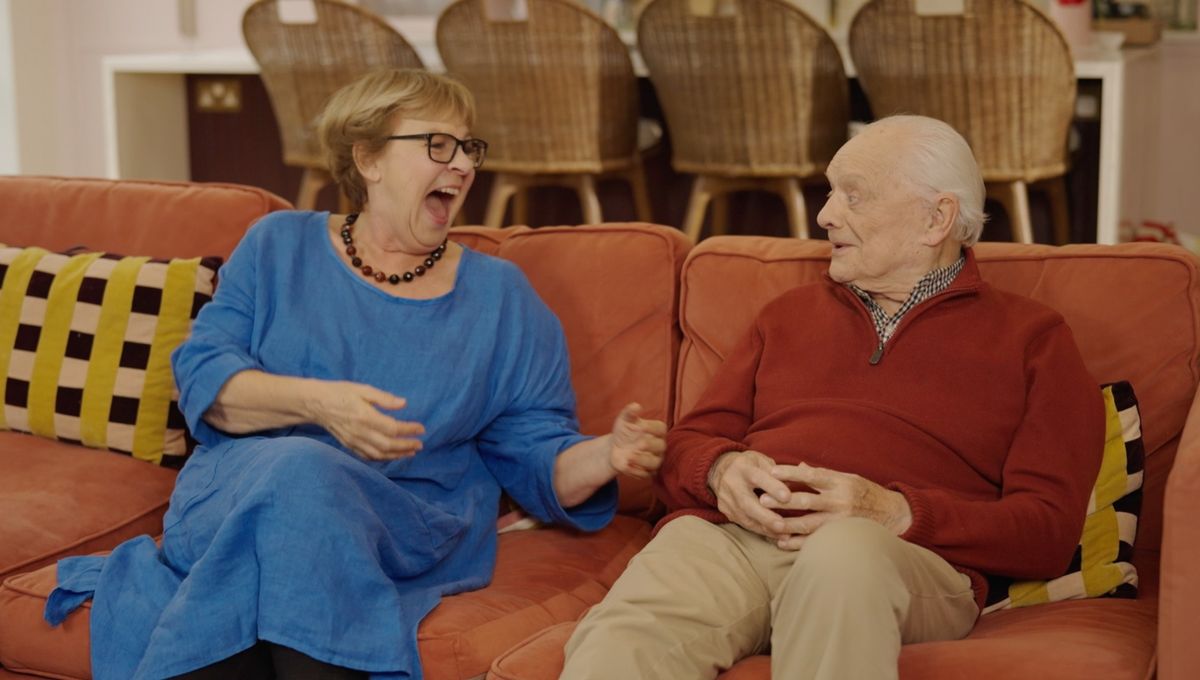Actor Sir David Jason, known for playing Del Boy in the hit show Only Fools and Horses will discuss the sitcom and show unseen footage in new series
Sir David Jason has insisted “the love for Only Fools has never faded” after reuniting with cast members from the beloved sitcom for a new documentary series.
Celebrating the show’s 45th anniversary, Only Fools And Horses: The Lost Archive will air behind-the-scenes footage as well as material that the series producer said was “filmed but never broadcast”.
The sitcom, which was a ratings smash hit for the BBC, including at Christmas, first aired on September 8 1981 and proved to be a career-defining role for Sir Jason, who played Del Boy, and Nicholas Lyndhurst, who played his brother Rodney.
Announcing the new UKTV documentary series, Sir David, 85, said: “The love for Only Fools has never faded. It’s incredible to see how many people still hold it close to their hearts. Revisiting these rediscovered moments reminded me just how special the show was – and still is. It’s incredible to be able to share them now.”
The two-part series features interviews with cast and crew and includes archival material from more than 10 classic episodes, including The Jolly Boys’ Outing and Mother Nature’s Son.
In interviews, cast members including Sir David, Tessa Peake-Jones (Raquel), Gwyneth Strong (Cassandra) and Sue Holderness (Marlene) pay tribute to creator John Sullivan, who died in 2011 at the age of 64.
Further discoveries, which didn’t make it into the original episodes due to timing or structural constraints include new material from the episodes He Ain’t Heavy, He’s My Uncle, Mother Nature’s Son, Time On Our Hands. There is also an unseen opening scene of Del and Rodney in a nightclub from The Class Of ’62.
Clips have been digitally scanned and restored from 16mm negatives, meaning the cast appear in high definition. Sean Doherty, director and series producer, said: “Few shows have the kind of enduring popularity that Only Fools enjoys.
“The archive has uncovered some extraordinary material – 66 unseen clips and scenes so far that were filmed but never broadcast because they didn’t fit the timing or structure of the original episodes, plus nearly 100 assets from rushes and location filming. We’ve truly been spoilt for choice.”
Helen Nightingale, UKTV’s head of factual and factual entertainment, commissioning, said: “Only Fools And Horses is part of the national DNA.
“With its humour, heart and unforgettable characters, it’s British comedy at its very best. This series is a celebration of its legacy and a chance to share new discoveries with the fans who’ve loved it for decades.”
In 2019 a musical adaptation of Only Fools And Horses starring Paul Whitehouse opened at the Theatre Royal Haymarket and it toured across the UK and Ireland in 2024 and 2025.
In 2022 on Only Fools and Horses actor Michael Fenton Stevens told how many jokes were lost from the sitcom over time due to time constraints.
Speaking on the Only Fools and Horses podcast he recalled his own episode and said: “It was a very big programme by then. I was in Series 6 and it had just gone to 40 minutes so they had the extra time to do things. That was the point by which they had turned into mini plays, they were just beautiful.
“They did that because John Sullivan would always write 10 minutes more than was needed. So every half hour script has 10 minutes of material which was cut. If you can find the original scripts from before they were printed to be used in the studio, if you can get them from when he was writing – and they must be somewhere, his family must have them on record, I think – it would be brilliant to read through all those bits that were cut.” The extra scenes and gags from Del Boy and Rodney were filmed, only to be omitted in the final edit.
The sitcom featured the colourful escapades of market trader Del Boy and his less streetwise younger brother Rodney as they went through the highs and lows of life trying to become rich.
The characters lived in Peckham with Grandad, played by Leonard “Lennard” Pearce, and their friends included Trigger, played by Roger Lloyd Pack, and Boycie, played by John Challis.
* Two part series Only Fools and Horses: The Lost Archive will be airing on U&GOLD in 2026.
Like this story? For more of the latest showbiz news and gossip, follow Mirror Celebs on TikTok, Snapchat, Instagram, Twitter, Facebook, YouTube and Threads.
